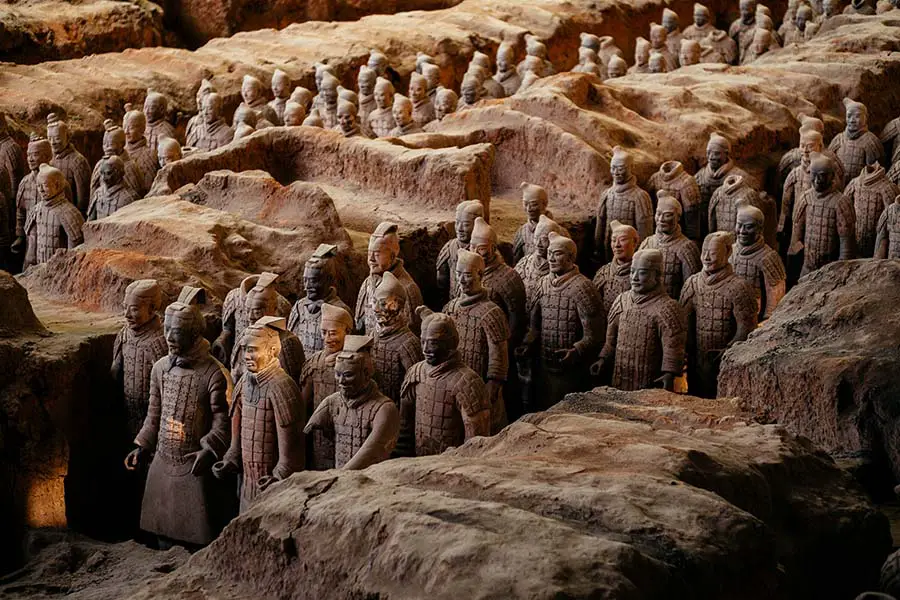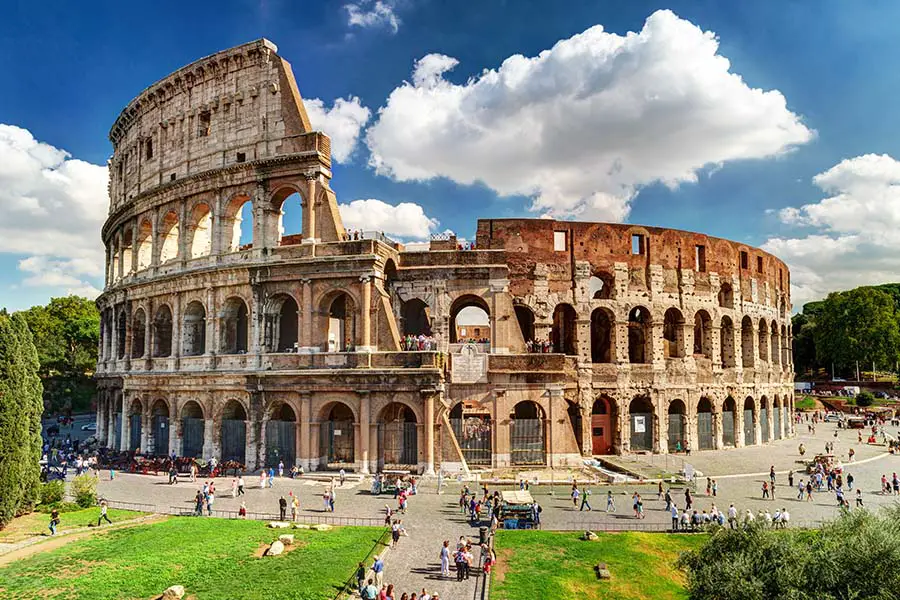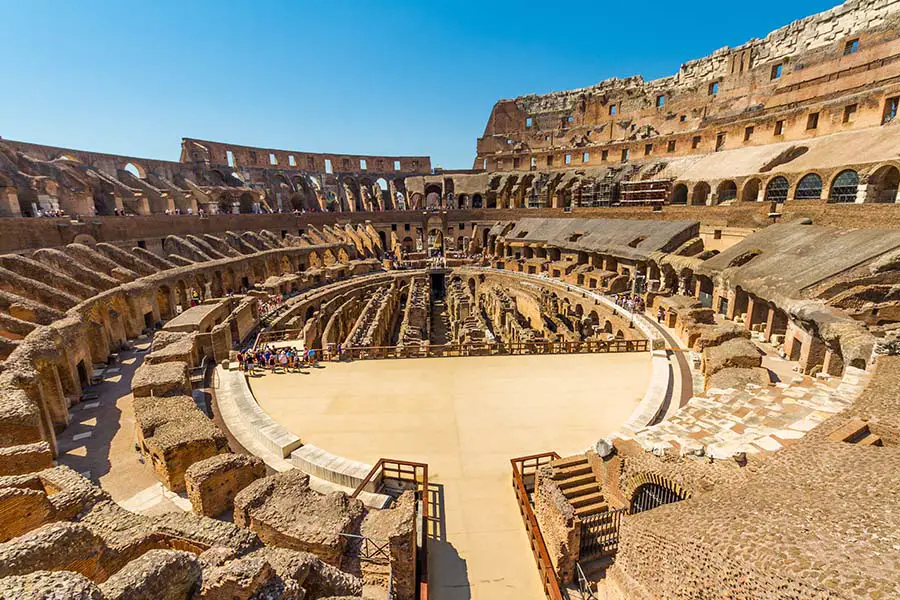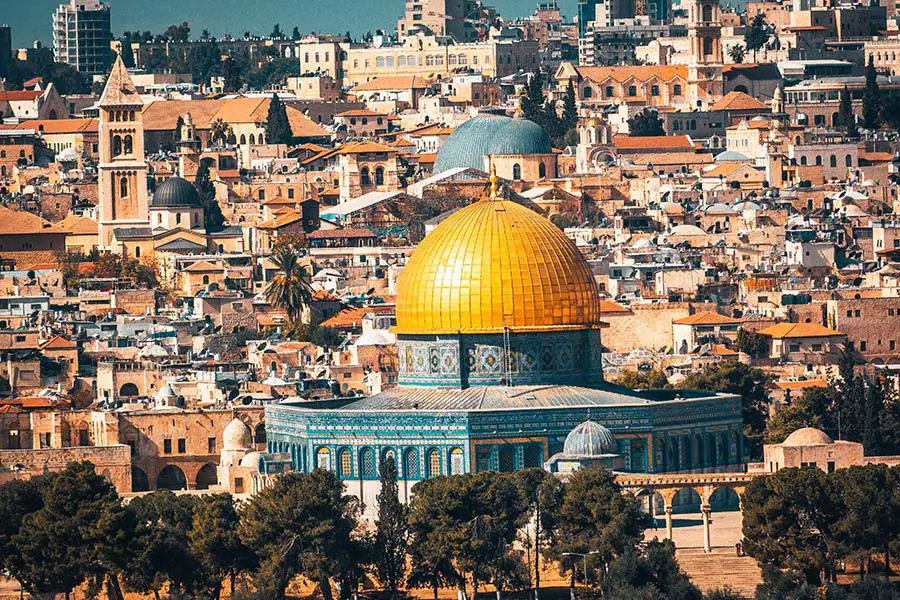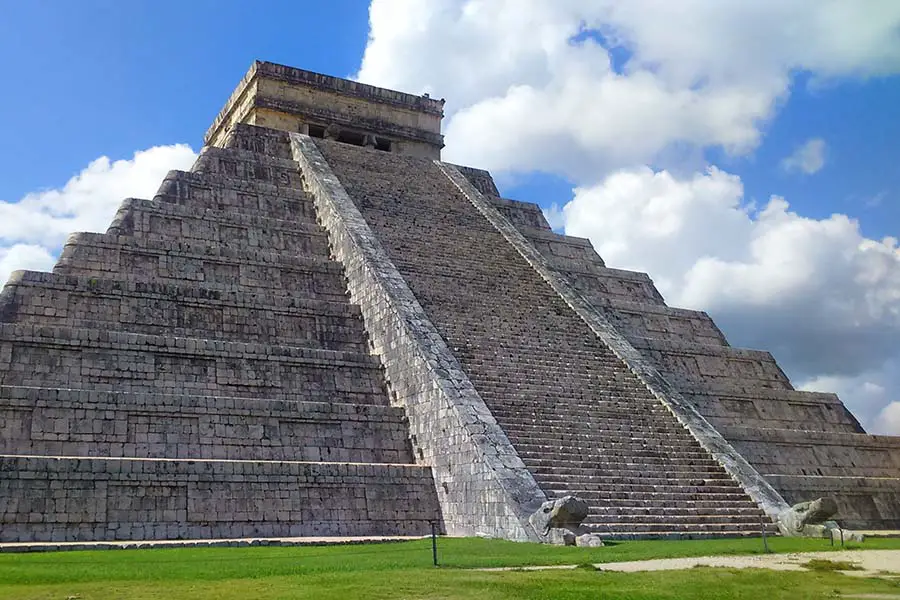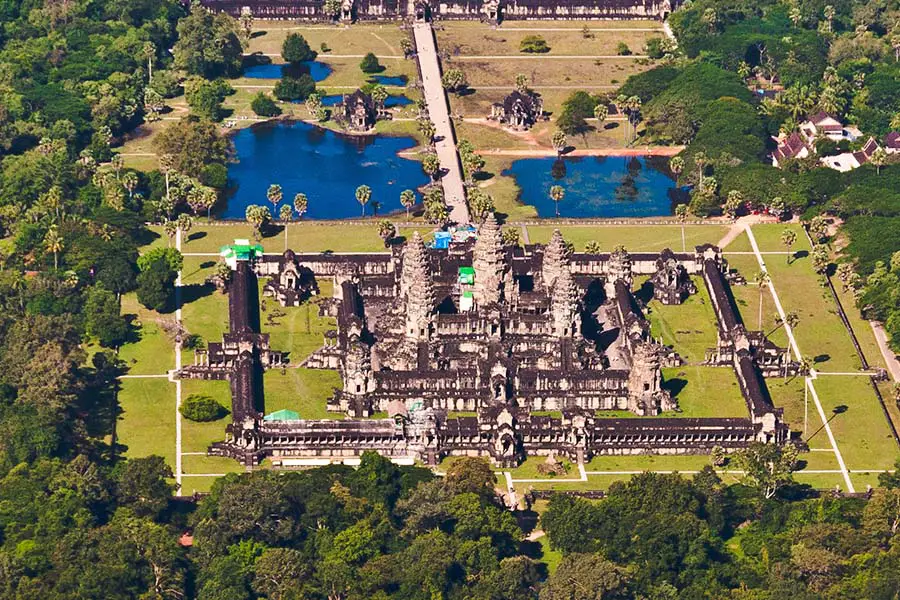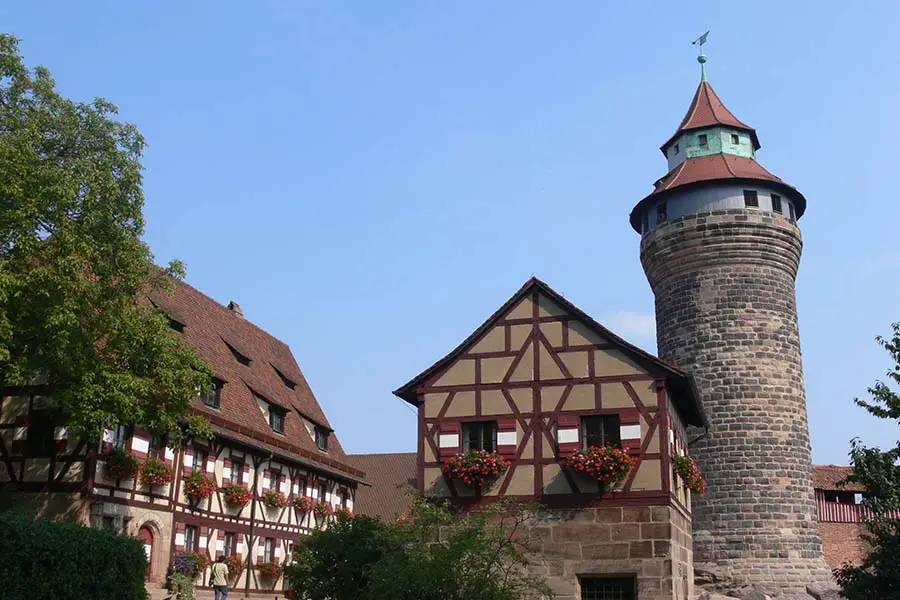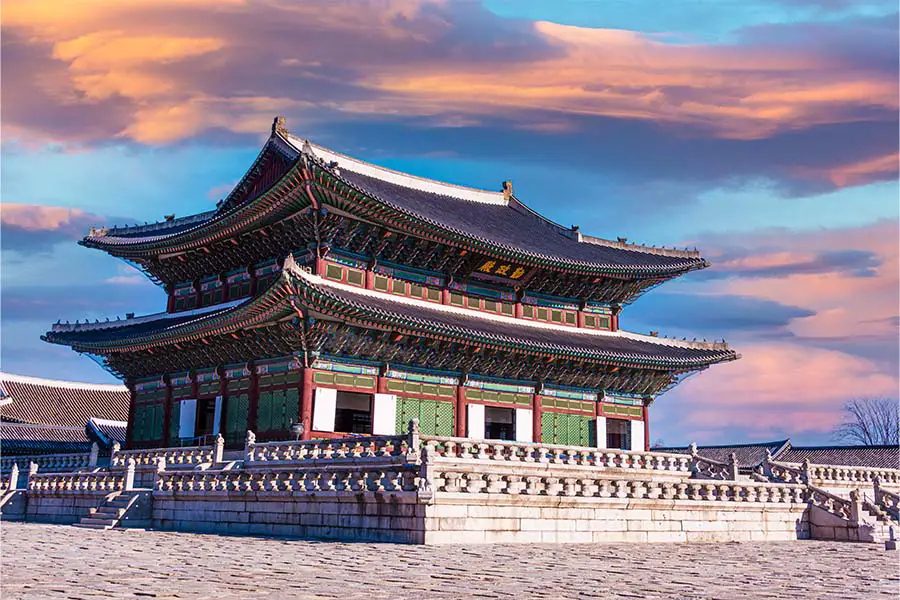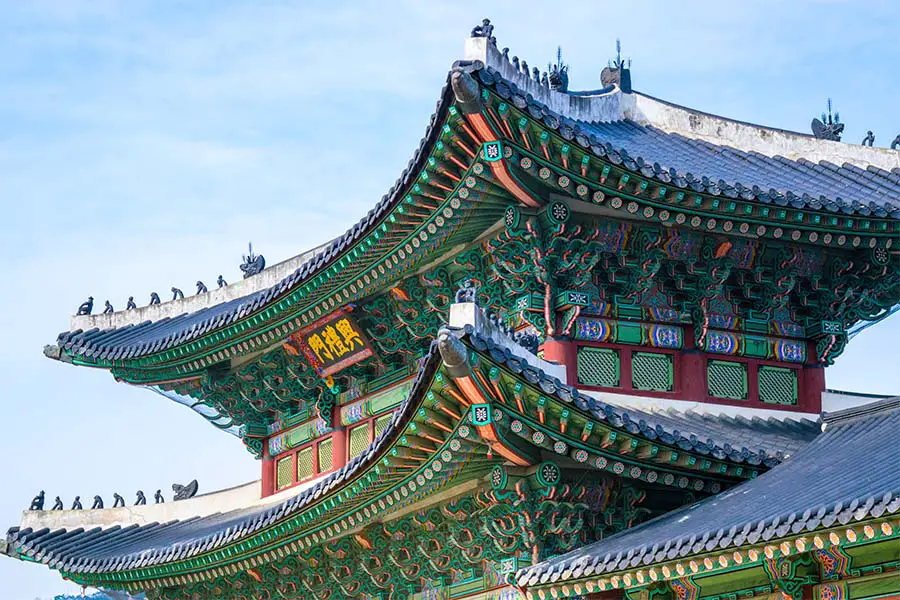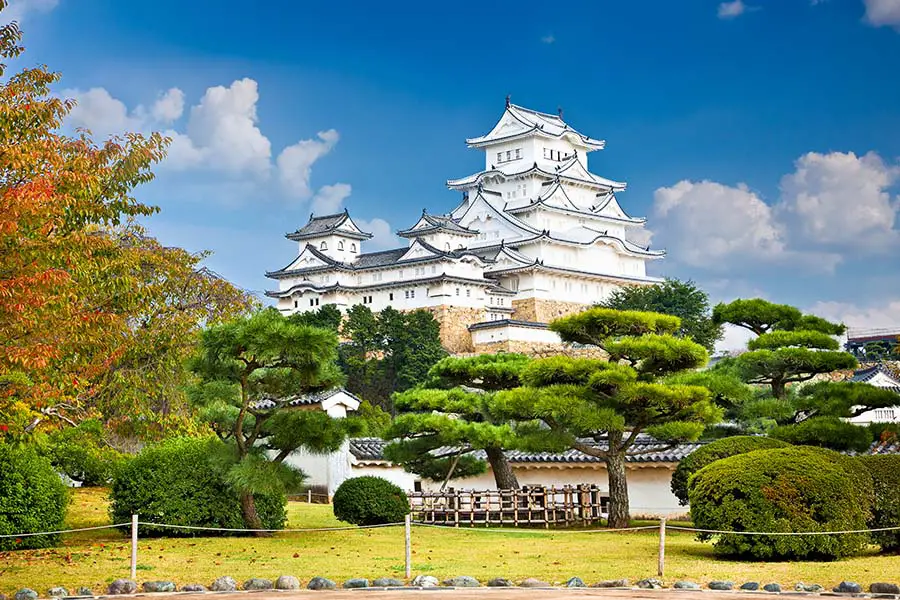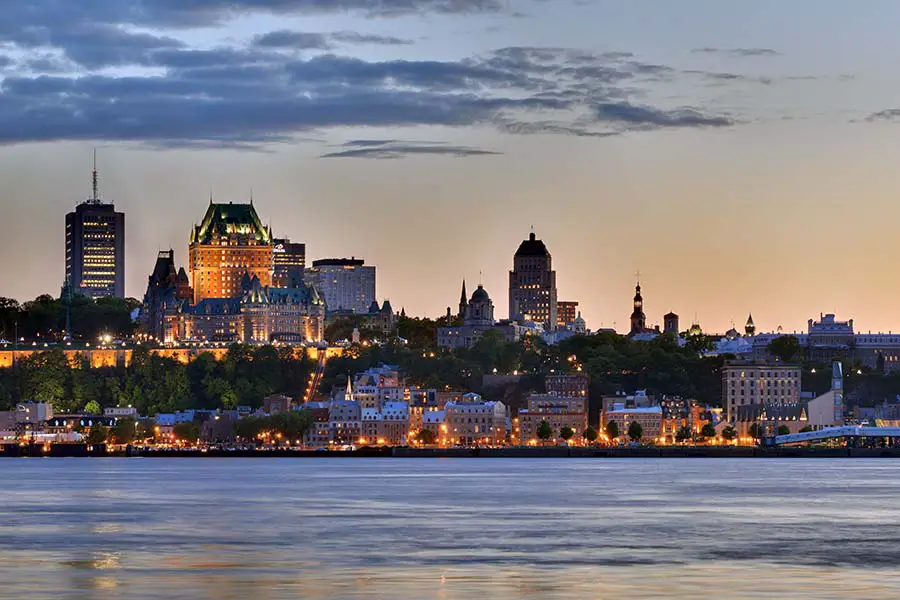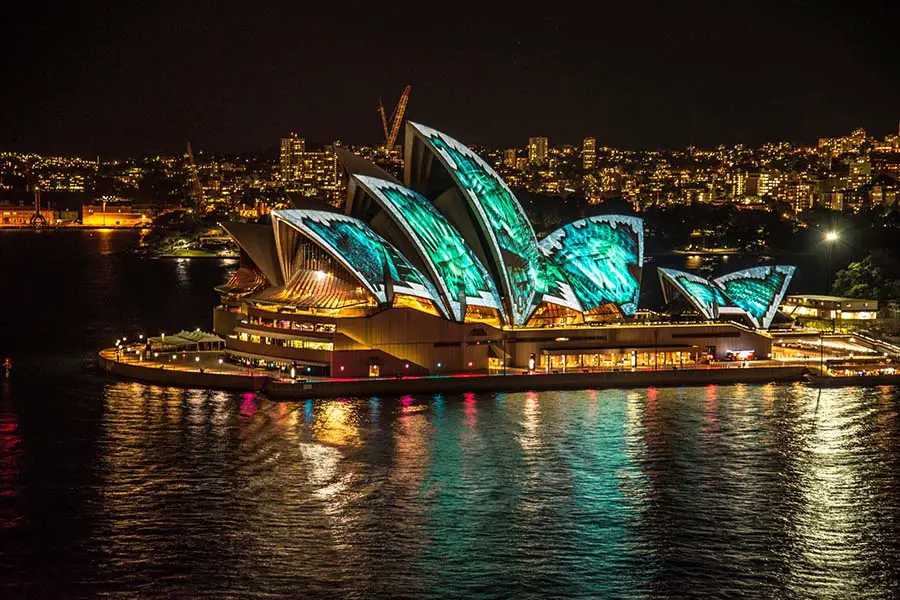37 Wonders of the World in Chronological Order
For over 5000 years, the world’s civilizations have pushed the boundaries of creativity to levels far beyond previous comprehension. As our understanding of mathematics, physics and engineering evolved, so too did our imagination and our capacity to produce great works of art. As the world’s empires jostled for power and position, epic structures were erected in every corner of the globe, leaving behind a legacy that helps us better understand who we are and what we’re capable of. In this guide, we’ll discuss 37 of the most iconic wonders of the ancient and modern worlds, along with the societies and individuals we have to thank. Let’s dive in!
Left – Acropolis of Athens 447 BC & Right – Neuschwanstein Castle 1869 AD
Contents
- The Pyramids of Giza | Ancient Egypt, 2600 BC
- Stonehenge | Neolithic Britain, 2400 BC
- Persepolis | Achaemenid Empire, 530 BC
- Acropolis of Athens | Greek Empire, 447 BC
- Terracotta Warriors | Qin Dynasty, 221-207 BC
- Al-Khazneh at Petra | Nabataean Kingdom, 1st Century AD
- The Western Wall | Judea, 20 AD
- Colosseum | Roman Empire, 72 AD
- Hagia Sophia | Byzantine Empire, 537 AD
- Dome of the Rock | Umayyad Caliphate, 7th Century
- Mahabodhi Temple | Gupta Empire, 5th-6th Century
- Borobudur Temple | Sailendra Dynasty, 8-9th Century
- Temple of Kukulcán at Chichen Itza | Mayan Civilization, 1000 AD
- Angkor Wat | Khmer Empire, 12th Century
- Windsor Castle | Norman England, 1066
- Imperial Castle of Nuremberg | Holy Roman Empire, 1027-1125
- Notre Dame | Kingdom of France, 1163-1260
- The Alhambra | Nasrid Dynasty, 13th Century
- Timbuktu | Mali Empire, 14th & 15th Centuries
- Moai | Rapa Nui People, 1250-1500
- Great Wall of China | Ming Dynasty, 1368-1644
- Gyeongbokgung Palace | Joseon Dynasty, 1396
- Machu Picchu | Inca Empire, 1438-1472
- Ciudad Colonial | Spanish Colonial Empire, Early 16th Century
- The Kremlin | Tsardom of Russia, Late 15th & 16th Centuries
- St Peter’s Basilica | Papal States/Italy, 1506-1626
- Himeji Castle | Edo Japan, 1609
- Sultan Ahmed Mosque | Ottoman Empire, 1609
- Taj Mahal | Mughal Empire, 1632
- Old Quebec | First French Colonial Empire, Early 17th Century
- U.S. Capitol Building | United States of America, 1793-1830
- Pena Palace | United Kingdom of Portugal, Brazil and the Algarves, 1854
- Neuschwanstein Castle | Kingdom of Bavaria, 1869-1886
- Eiffel Tower | France, 1880’s
- Christ the Redeemer | Second Brazilian Republic, 1931
- Sydney Opera House | Australia, 1973
- Burj Khalifa | United Arab Emirates, 2009
1 – The Pyramids of Giza | Ancient Egypt, 2600 BC
Born on the banks of the Nile in northern Africa, Ancient Egypt was, arguably, the first great civilization. Spanning roughly 3 millennia from 3100 BC to the Roman Invasion in 30 BC, the Egyptians achieved some of the first epic feats of engineering including a succession of pyramids culminating in the grandest of all ancient wonders, the Pyramids of Giza.
Built as a tomb for the Pharaoh Khufu in 2,600 BC, the first and largest of Giza’s pyramids, the Great Pyramid, stands at a height of almost 500 feet and stood as the world’s tallest man-made structure for almost 4,000 years. One of the reasons these pyramids are so impressive is the mystery that surrounds their construction; the Great Pyramid is estimated to contain 2.3 million stone blocks each weighing between 2.5 to 15 tons. The pyramids are part of the Giza Necropolis, which also contains the Great Sphinx of Giza.
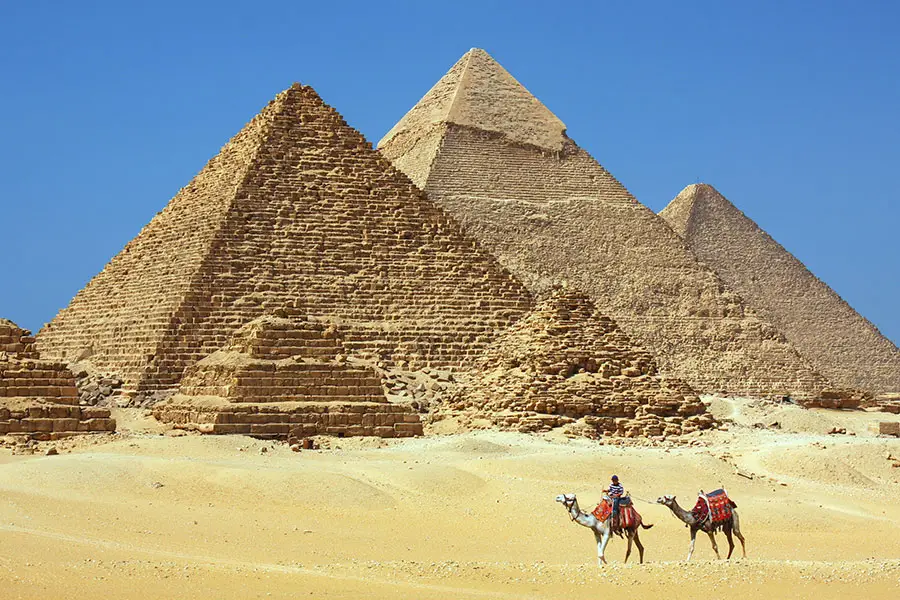
2 – Stonehenge | Neolithic Britain, 2400 BC
While society around the Nile had progressed considerably by the 3rd millennia BC, areas such as the British Isles were still experiencing the early stages of their agricultural revolution. The Neolithic British Isles is a period of time that dates from 4,000 BC to 2,500 BC and culminates roughly with the creation of Stonehenge as we know it today.
Stonehenge comprises over 100 gigantic sarsen, bluestone and sandstone blocks hauled from a variety of locations. Due to a lack of written records, we are still unsure of its exact purpose or how it was constructed. However, suggesting some kind of religious or spiritual significance, various parts of the structure are orientated towards the sunset of the winter solstice and the sunrise of the summer solstice—the shortest and longest days of the year respectively.
Left – Stonehenge at Sunrise | Unsplash: Ankit Sood & Right – Stonehenge on a beautiful clear day | Unsplash: Sung Shin
3 – Persepolis | Achaemenid Empire, 530 BC
It wasn’t until around 2,000 years later that the next set of great civilizations really began to flourish. Around the end of the 6th Century BC, the Greek and Persian empires ballooned into the earth’s controlling states and engaged in a series of epic battles referred to as the Greco-Persian Wars. Known as the Achaemenid Empire during this period, the Persians built several important cities including Persepolis, which became the ceremonial capital.
It is thought that while the founder of the Achaemenid Empire, Cyrus the Great chose the location, it was Darius the Great—the 3rd King of Kings—who built the earliest structures that remain today. Persepolis consists of a platform with several palaces that contain sets of beautifully crafted Persian columns and is one of the best examples of Achaemenid architecture. The Gate of All Nations sits inside Persepolis and was built by Darius the Great’s successor Xerxes I.
The ruins of ancient city Persepolis, the ceremonial capital of the Achaemenid Empire
4 – Acropolis of Athens | Greek Empire, 447 BC
On the other side of the Aegean Sea, the Greeks were entering their classical period. This era directly followed the Greco-Persian Wars, which some evidence suggests culminated in a peace treaty called the Peace of Callias. The arts including philosophy, literature and poetry were celebrated during this period along with architecture and engineering, exemplified by the handful of structures atop the Acropolis of Athens.
The Parthenon, the Propylaea, the Erechtheion and the Temple of Athena Nike were all orchestrated by Pericles, a Greek statesman and general who was influential in both the Greco-Persian War and the Peloponnesian War—waged against fellow Greek city-state, Sparta. The most prominent of the structures on the Acropolis, the Parthenon is one of the finest examples of Doric architecture and stands as a defiant monument, built in place of the previous temple destroyed by the Persians.
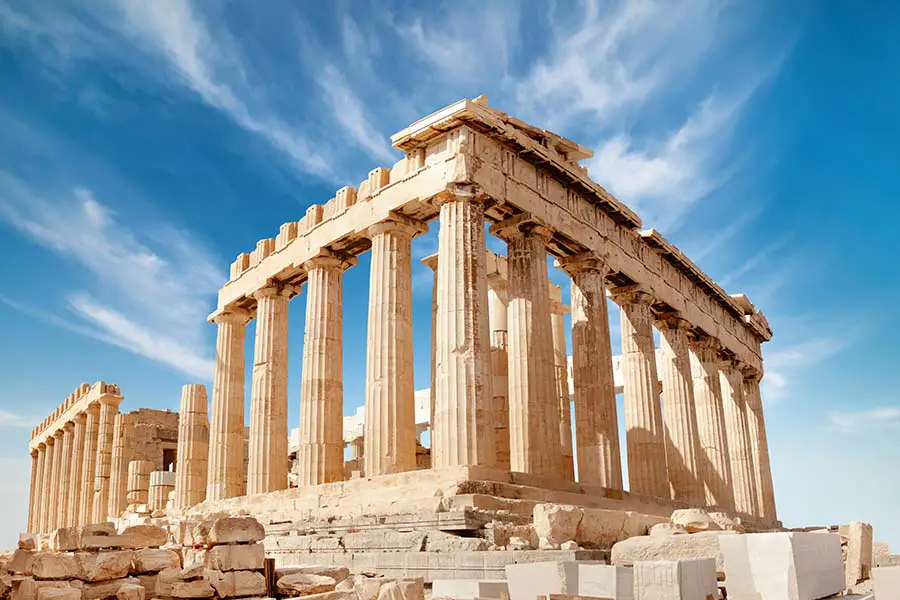
5 – Terracotta Warriors | Qin Dynasty, 221-207 BC
Around the same time as the Macedonian/Greek Empire led by Alexander the Great was disintegrating in parts of the Near East, the Qin Dynasty was reaching its peak in far-eastern Asia. Although their reign was short—around 15 years—they are considered to be the first dynasty of Imperial China, a period of Chinese history that stretches from 221 BC to 1912 AD and was succeeded by the Republic of China.
To assist in his ascension to the afterlife, the Terracotta Warriors were built by the self-proclaimed first emperor of China, Qin Shi Huangdi towards the end of his rule in 207 BC. The tirelessly crafted collection is made up of thousands of lifesize figurines made from terracotta each differing slightly in their appearance. The army of soldiers, chariots and horses was not found until 1974 and is considered one of the greatest archaeological finds of the 20th century.
The famous terracotta warriors of Xian, China | Left – Lukas Hlavac / Shutterstock.com
6 – Al-Khazneh at Petra | Nabataean Kingdom, 1st Century AD
As Imperial China burgeoned with the expansion of the Han Dynasty, the little known Nabataean Kingdom was established around modern-day Jordan by a group of nomadic Arabs. The kingdom became an important trading centre thanks to its position along the incense trade route, which linked the Mediterranean to the far east.
Petra was the capital of the Nabataean Kingdom and, thanks to the revenue gained from trading, plays host to some of the most spectacular carved-rock architecture in the world. Al-Khazneh, which means “The Treasury” in Arabic, was built as a mausoleum for Aretas IV, the King of the Nabataeans for a little over 30 years from 9 AD to 40 AD. The sandstone carving stands at around 40m tall and exhibits Corinthian capitals—developed during the final classical order of Greek and Roman architecture. The Nabataean Kingdom was finally annexed in 106 AD by the Romans themselves.
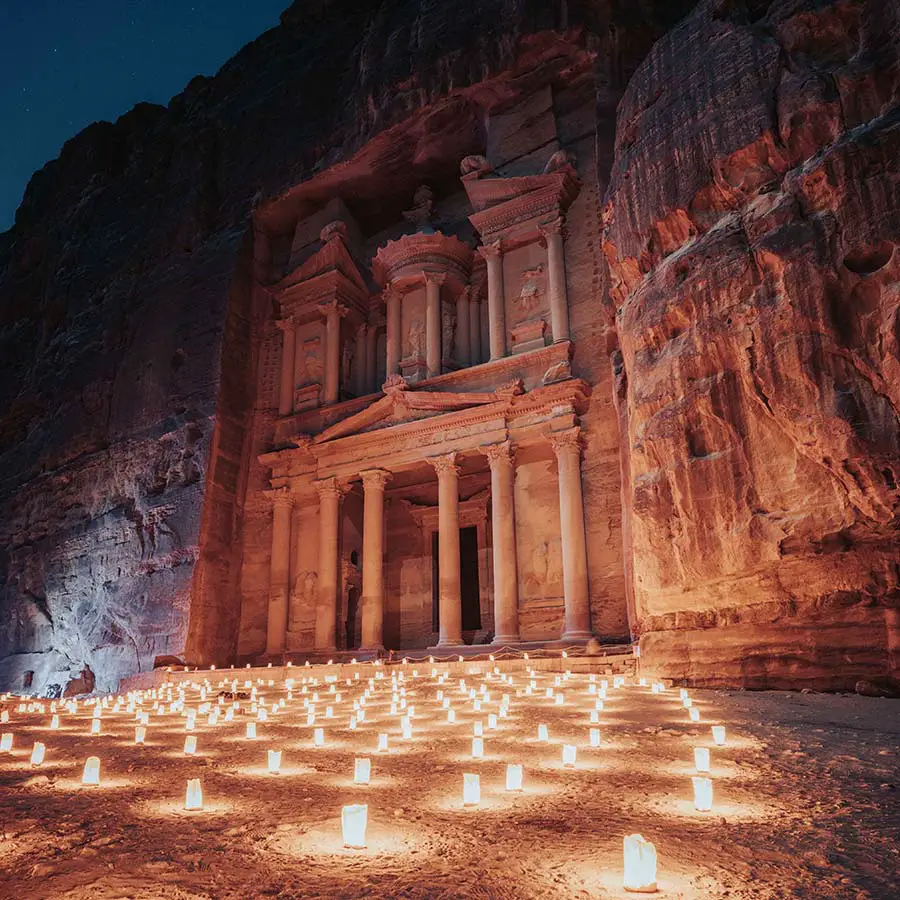
7 – The Western Wall | Judea, 20 AD
Judaism is said to be the world’s second-oldest religion. It originated in the country we know now as Israel where its most important city was, and still is, Jerusalem. In addition to Judaism, this city bears great significance to two other Abrahamic religions: Christianity and Islam, being the location of Abraham’s attempted sacrifice of his son and the crucifixion of Jesus Christ.
The Jewish people built a temple in Jerusalem several times; the first was built in 957 BC and was destroyed by the Neo-Babylonian Empire. The second temple was built in 20 BC and destroyed by the Roman Empire just 50 years later. Of this second temple, there is only a small section of wall that remains today, which is now known as the Western Wall or the Wailing Wall. It is the holiest site in the Jewish religion, used as both a place of prayer and to mourn the destruction of the temples.

8 – Colosseum, Rome | Roman Empire, 72 AD
For centuries, the Roman Republic had asserted their dominance around the Mediterranean culminating in the establishment of the Roman Empire in 27 BC. This great empire was known for both its military might and its creative brilliance, revolutionising many areas of society including the transportation of water via their aqueducts. The Romans lasted for almost exactly 5 centuries before the fall of the Western Roman Empire in 476 AD.
Amphitheatres were used to host events such as gladiatorial contests, theatre and executions. The Romans built many during their reign, the largest of all being the Colosseum in Rome, which seated up to 80,000 people. Constructed in 72 AD, the Colosseum was once named the Flavian Amphitheatre, thanks to the ruling dynasty at the time, the Flavian Dynasty, started by Vespasian and continued by his sons Titus and Domitian.
Left – Colosseum in Rome, Italy & Right – Interior of the Colosseum | Andrew Chisholm / Shutterstock
9 – Hagia Sophia | Byzantine Empire, 537 AD
In 313 AD the Roman Emperor Constantine adopted Christianity as the official religion of his empire. Then, after many years of dominance, the Roman Empire would become too large to handle and split into the Western Roman Empire and its eastern counterpart known as the Byzantine Empire. The territory of the Byzantines would fluctuate greatly over the following centuries and they would eventually fall to the Ottomans roughly 1000 years later in 1453 AD.
Constantinople—known today as Istanbul—exhibits some of the finest examples of Byzantine Architecture including the Church of Hagia Eirene and the Hagia Sophia. After its initial construction in 360 AD and a series of fires, the Byzantines built the iconic structure that stands today in 537 and for over 900 years it stood as one of the largest and most important churches of Orthodox Christianity. It was then converted into a mosque by the Ottomans after the fall of Constantinople.

10 – Dome of the Rock | Umayyad Caliphate, 7th Century
Not long after the Hagia Sophia was built, the Islamic Prophet Muhammed was born in the year 570 in Mecca in modern-day Saudi Arabia. From here, the Islamic world quickly expanded after his death in the 7th century with a succession of conquests establishing a series of caliphates—a territory or state under the rule of an Islamic leader otherwise known as a caliph. These conquests would decimate the Byzantine Empire and take control of the Middle East, Northern Africa and parts of Europe.
The Dome of the Rock is an Islamic monument built in the 7th century during the Umayyad Caliphate once they had taken control of Jerusalem. It is the third most sacred site of Islam after Mecca and Medina and is located just meters from the Western Wall. In addition to the Jewish and Islamic sites in Jerusalem’s old city, the Church of the Holy Sepulchre is Christianity’s most holy site; it is said to contain Jesus’s tomb, which lies empty after his resurrection.
Left – Dome of the Rock inside the Old City of Jerusalem | Unsplash: Raimond Klavins & Right – Dome of the Rock | Unsplash: Stacey Franco
11 – Mahabodhi Temple | Gupta Empire, 5th-6th Century
Although the beginnings of Indian civilization date back as far as Ancient Egypt, its most impressive feats of architecture and engineering didn’t surface until the middle ages. As well as being one of the world’s most important centres of civilization, India was also the birthplace of Buddhism, the world’s 5th most popular religion with around 500 million followers today.
Being located at the site where Buddha is said to have gained enlightenment, Mahabodhi Temple is one of the most important Buddhist religious sites. Although the first semblance of a temple was built in the third century BC, the structure we see today was constructed somewhere between the 5th and 6th centuries during the reign of the Gupta Empire. The temple is one of the oldest brick structures in east India and was highly influential in the succeeding Indian architectural periods.
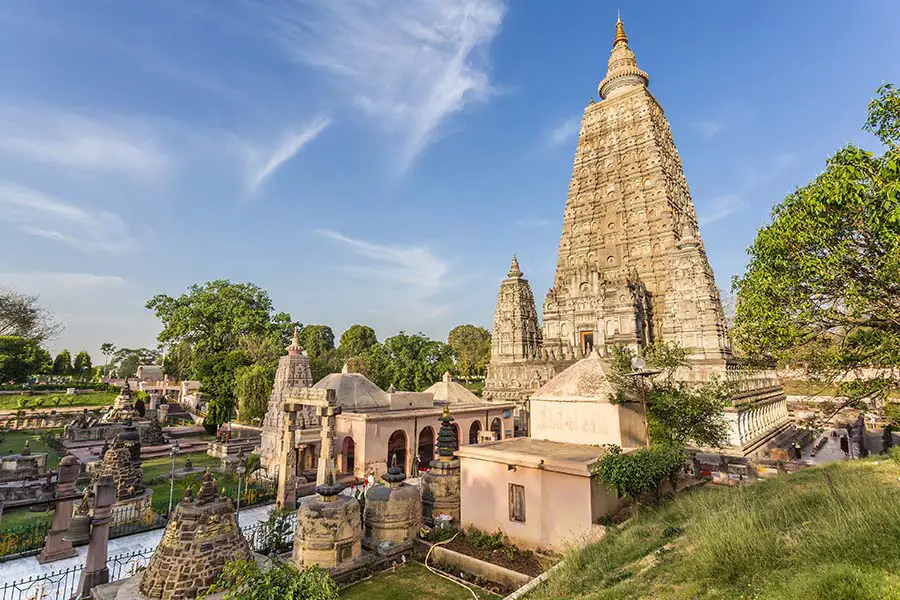
12 – Borobudur Temple | Sailendra Dynasty, 8-9th Century
Located across the Bay of Bengal, another important centre for Buddhism was beginning to form at the start of the 7th century. Meaning fortunate, prosperous or happy, the region’s first empire, Srivijaya grew to include large portions of the islands of Sumatra and Java and the Malay Peninsular.
Borobudur was built around the 8th or 9th century and is the largest Buddhist temple in the world, it sits in a spectacular valley surrounded by lush green mountains. The temple was built by the Sailendra Dynasty who ruled over the island of Java at the time and comprises a pyramid-like base with five terraces and three circular platforms, which act as a base for the stupa—its Buddhist monument. It was abandoned for many years, left covered in volcanic ash and enveloped by the jungle, before being discovered again in the early 19th century and restored several times, most recently by UNESCO in 1973.

13 – Temple of Kukulcán at Chichen Itza | Mayan Civilization, 1000 AD
Much like the evolution of society in India, civilization in Mexico started to develop much earlier than their most well-known remnants. The Mayan civilization began on the Yucatán Peninsula in their pre-classical period which stretched from 2,000 BC to 250 AD. One of their most important cities was Chichen Itza, which grew from their Late Classic into their Postclassic period ending in 1200 AD.
There are several important structures at Chichen Itza including the Temple of a Thousand Warriors, the Grand Ballcourt and The Temple of Kukulcán otherwise known as El Castillo. This steep four-sided temple is an excellent example of the Mayan’s step pyramid architectural style and was built around 1000 AD. Like the Borobudur Temple in Indonesia, El Castillo features a small temple atop its pyramid base used to worship the Mayan god, Kukulcan. The name El Castillo was not adopted until the Spanish arrived, after which it was used as a lookout point.
Temple of Kukulcán aka El Castillo at Chichen Itza | Left – Pixabay: Jimena Soto & Right: Pixabay: Darvin Santos
14 – Angkor Wat | Khmer Empire, 12th Century
After a succession of kingdoms that ruled from the turn of the first millennium AD to 800 AD, the Hindu/Buddhist Khmer Empire was formed and lasted for roughly 6 centuries. The Khmer architectural style is quite unique and is supposed to represent Mount Meru, a five peaked mountain, which is home to the Hindu and Buddhist gods and the centre of the universe.
Meaning “city of temples”, Angkor Wat is the largest religious monument in the world, stretching over 400 acres across the countryside of north-western Cambodia. The temple complex was originally dedicated to one of the principal Hindu deities, Vishnu in the early 12th century but was eventually converted into a Buddhist temple towards the end of the century. The complex is made up of a central temple and a series of walls and moats that stretch as far as the eye can see.
Left: Angkor Wat Temple entrance | Unsplash: Paul Szewczyk & Aerial view of Angkor Wat, Siem Reap, Cambodia | WikiCommons: Mark Fischer
15 – Windsor Castle | Norman England, 1066
By the turn of the first millennium, England had been under Anglo-Saxon rule for over 5 centuries. That was until an army from various French provinces led by William the Conqueror sailed across the channel in 1066 to take England by storm, leading to the Norman occupation of Britain.
Built by William himself, Windsor Castle sits west of London on the southern bank of the River Thames. One of William’s three sons, Henry I added domestic quarters to the castle, which led to its conversion into a palace in the late 12th century. It has been improved upon many times over the years and is now the longest-occupied palace in Europe and the largest occupied castle in the world. Its architectural style is predominantly Georgian and Victorian and the complex encompasses not only the castle itself but a chapel, several gates and additional accommodations.
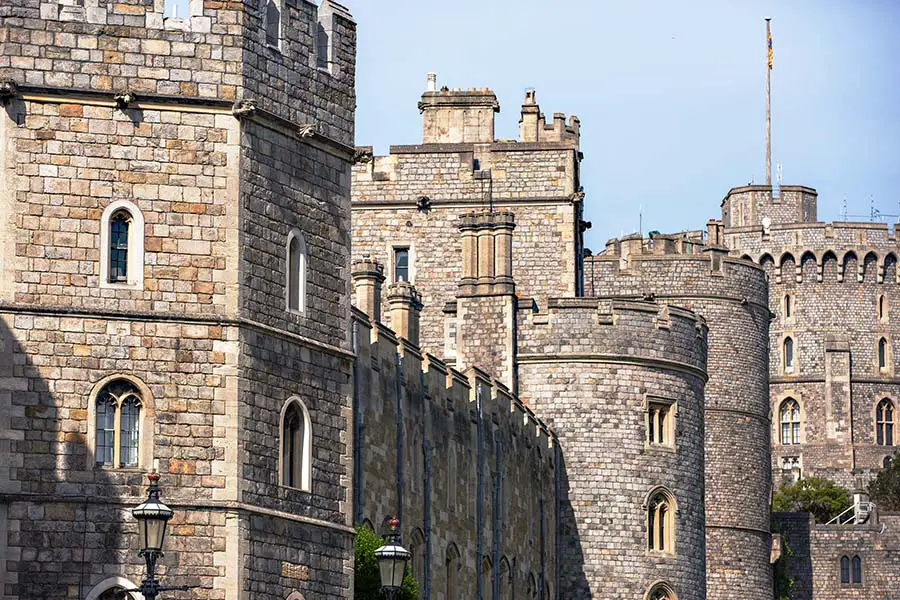
16 – Imperial Castle of Nuremberg | Holy Roman Empire, 1027-1125
The Holy Roman Empire came into existence between the 9th and 10th centuries. According to Voltaire, they were “in no way holy, nor Roman, nor an empire”, however, they would rule Central Europe for close to 1000 years and produce a collection of impressive Imperial Castles—those built by the order of the Holy Roman Emperor.
Built between 1027 and 1125, the Imperial Castle of Nuremberg was one such castle. The rulers of the Holy Roman Empire were well known to roam their territory and stay in various castles on their travels. Thanks to its position within the realm, the Castle of Nuremberg was one of the most popular stop-overs and, along with its city walls, is one of the most revered fortifications in Europe. The interior of the castle has been renovated several times, in particular before and after the Second World War. The castle overlooks the city of Nuremberg on the north side of the city walls.
The Imperial Castle of Nuremberg | Left – WikiCommons: KPFC & Right – WikiCommons: Remi Mathis
17 – Notre Dame | Kingdom of France, 1163-1260
On the western side of Europe, the Kingdom of France—now known simply as France—was quickly developing into one of Europe’s superpowers. In addition to their military prowess, French architecture and engineering advanced rapidly through the Middle Ages, progressing from a Gothic style in the early 12th century to a Renaissance style towards the 16th century.
Notre Dame cathedral in Paris is one of the best examples of early French Gothic Architecture. The building of the cathedral commenced in 1163 and around one century later it was mostly complete. Notre Dame is particularly well-known for its flying buttresses; an innovation of the 13th century, they are used to support the weight of the roof. The cathedral also features gigantic ceilings and multi-coloured stain-glass windows adding to its grandeur.

18 – The Alhambra | Nasrid Dynasty, 13th Century
During the middle ages, the Iberian Peninsula was a hotly contested region between Islamic Arabs and Christian Europeans, this period of history is known as the Reconquista. By the beginning of the 13th century, the country of Spain as we know it today had started to take shape, however, there was still a small Arab territory in the south held by the Nasrid Dynasty.
The Alhambra is a royal palace within this territory, located roughly 70km from the southern coast of Spain. Sitting on the edge of the breathtaking Sierra Nevada mountain range in the Spanish province of Grenada, it is easy to see why this palace was so revered. It was built initially by the Nasrids during their decline and, after the land had been seized by the Spanish in the late 15th century, was used as a palace by the country’s royalty.

19 – Timbuktu | Mali Empire, 14th & 15th Centuries
Another important centre for the Islamic world found much further south on the African continent was the Mali Empire. They came to power during the 13th century and, thanks to the vast deposits of gold within their kingdom, would become a centre for trade and one of the wealthiest empires on earth.
One of Mali’s most famous leaders Mansa Musa was a devout Muslim and after a pilgrimage to Mecca would take control of Timbuktu where, in 1327, he built one of the three mosques now collectively known as the University of Timbuktu. The three mosques exhibit a unique architectural style using mud and timber and once held up to 25,000 students who worked on important Islamic texts.
Left – Mosque at Timbuktu, Mali | Flickr: Anne and David & Right – Close up of one of the Mosques at Timbuktu
20 – Moai | Rapa Nui People, 1250-1500
Fortunately oblivious to the chaotic territorial disputes of Eurasia, the Rapa Nui People provide a refreshing break to an otherwise tumultuous story. It is thought that the Polynesians first inhabited the island of Rapa Nui somewhere between 300 and 1200 AD. This tiny island, which today is known as Easter Island, measures just under 25 km / 15 miles long by roughly 12 km / 7.5 miles wide and is home to several volcanoes, a quarry and a huge collection of monolithic figures, hand-carved by the Polynesians.
Known as Moai, each monolith was carved from the quarry on the northeast side of the island and transported to various locations on the perimeter of Rapa Nui. There are almost 1,000 of these enormous sculptures, which are thought to have been built between the 13th and 15th centuries. The heaviest of the monuments weigh up to 85 tons and are either positioned individually or as groups lined up on stone platforms known as ahu.
Left – Moai atop an ahu on Easter Island María | Pixabay: Victoria Alister & Right – Individual Moai Pixabay: SoniaJane
21 – Great Wall of China | Ming Dynasty, 1368-1644
The Mongol Empire was the largest contiguous empire in history, rising to prominence in the 13th and 14th centuries. They took over the vast majority of Asia including the country of China. The Ming dynasty was the first Chinese dynasty to take back their land after the Mongol invasion and subsequent rule. They governed China from 1368 to 1644 AD and left behind some of China’s most spectacular ruins including the Forbidden City, the Fortifications of Xi’an and a rather large wall.
The construction of The Great Wall of China started in 220 BC during the Qin Dynasty. It was used to protect from northern invasions and would eventually become the largest military structure in the world, stretching 20,00km across China’s sprawling countryside. Built during the Ming Dynasty, the most pristine sections of the wall lie just north of Beijing and reach over 25ft in height.
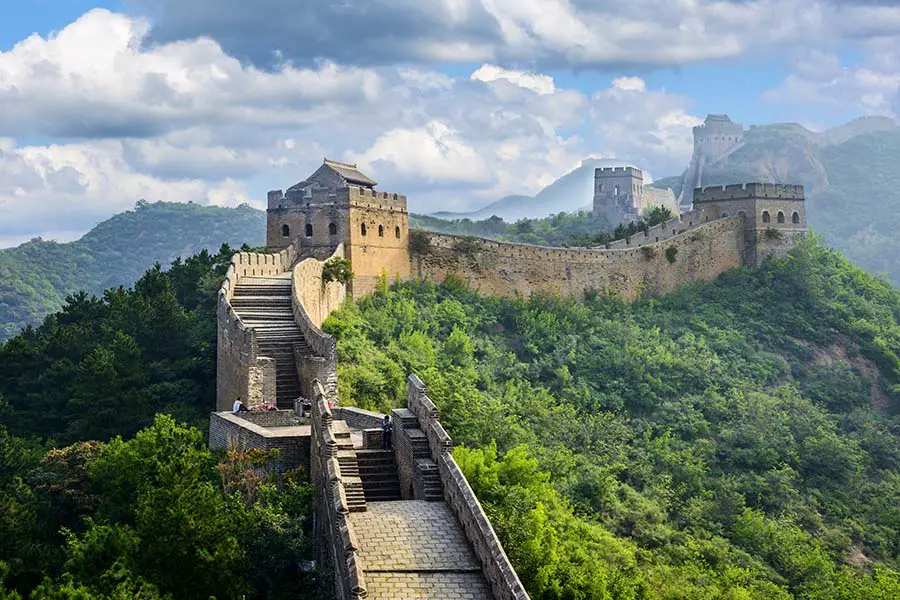
22 – Gyeongbokgung Palace | Joseon Dynasty, 1396
Located on a peninsula to the northeast of China and encompassing both of the modern-day countries of North and South Korea, the Kingdom of Goryeo was also invaded and ruled briefly by the Mongols until 1350. Not long afterwards, in 1392, the Joseon Dynasty would seize power and rule as the last dynastic kingdom of Korea until 1910 when the Empire of Korea was established.
The Joseon Dynasty built 5 grand palaces during their reign, the first and largest of which was Gyeongbokgung Palace, which sits in front of Mount Bugak on the north side of Seoul. This gigantic palace complex was once completely destroyed by the Japanese in 1592 before being rebuilt 3 centuries later in 1867. This lack of historical integrity could be the reason why the smaller Changdeokgung is listed as a UNESCO world heritage site instead of Gyeongbokgung.
Left – Gyeongbokgung Palace | Pixabay: bongki66 & Right – Closeup of the intricate details of Gyeongbokgung Palace | Unsplash: Brady Bellini
23 – Machu Picchu | Inca Empire, 1438-1472
Just as the Mongol Empire was evaporating in the early 15th century, another epic civilization was on the rise in South America. At its height in 1525, the Incan Empire stretched from Ecuador and Peru in the north to Chile in the south and was the largest empire in the Americas before the period of Spanish colonial rule.
Most archaeologists agree that Machu Picchu was built in the mid 15th century as an estate for the Incan emperor Pachacuti who ruled for over 30 years. The estate is set on a saddle in between the two mountains, Machu Picchu and Huayna Picchu in the spectacular Eastern Cordillera range of the Andes. It was abandoned upon news of the Spanish conquest to the north and wasn’t discovered again until 1911 by the American explorer Hiram Bingham.

24 – Ciudad Colonial | Spanish Colonial Empire, Early 16th Century
When Christopher Colombus made his maiden voyage from Spain on October 12, 1492, he set sail in search of an alternate trade route to India. What he found instead was the islands of the Caribbean and eventually mainland America. The island of Hispaniola—split today between Haiti and the Dominican Republic—was the first island to be settled by the Spanish.
The city of Santo Domingo was founded in 1498 and is the oldest permanent establishment of the New World, becoming the headquarters of Spanish conquistadors in the early 16th century. The city was laid out in a grid system and became the template for all other cities founded in the Americas by the Spanish. Fortaleza Ozama is recognized as being the oldest military structure in the Americas and sits at the entrance to Ciudad Colonial on the western side of the Ozama river mouth.
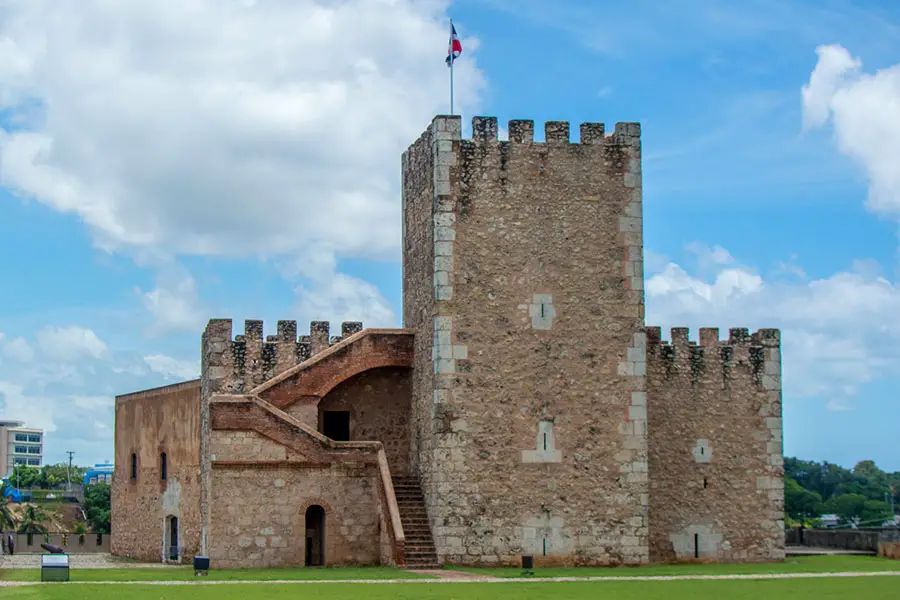
25 – The Kremlin | Tsardom of Russia, Late 15th & 16th Centuries
As the territory of the Spanish Empire was growing exponentially during the 16th century so too was that of Russia. Modelled on the Byzantine emperors to the south, after 14 years as the grand prince of Moscow, Ivan the IV—more commonly known as Ivan the Terrible—declared himself Tsar of all of Russia and ushered in a centralised Russian state known as the Tsardom of Russia. This state would expand at a rate of 35,000 square km per year until the establishment of the Russian Empire in 1721.
The Kremlin is a fortified complex in Russia’s capital, Moscow, it was completed in 1495 and its beautiful red-brick towered walls encircle several palaces and cathedrals. The most impressive of all of the Kremlin’s palaces, the Grand Kremlin Palace was finished in 1849 and is the official residence of the Russian President. The Kremlin sits on the north bank of the Moskva River just east of several other well-known Russian landmarks: Red Square and the Cathedral of Vasily the Blessed, more commonly known as St Basil’s Cathedral.

26 – St Peter’s Basilica | Papal States/Italy, 1506-1626
From the French word meaning “rebirth”, the Italian Renaissance lasted from around 1300 to 1600 AD and was a period of great cultural progression, influencing much of Europe and marking an end to the middle ages. During this era, great works of art were produced including Florence Cathedral, the Mona Lisa by Leonardo da Vinci and the Sistine Chapel ceiling by Michelangelo.
A talented painter, sculptor and architect, another work of art on Michelangelo’s resume is St. Peter’s Basilica, located next to the Sistine Chapel in the Vatican. It is one of the most important churches in the Catholic faith and one of the best examples of Renaissance architecture. In particular, the dome of the basilica was one of Michelangelo’s masterpieces and is similar in both appearance and construction to that of the Florence Cathedral, finished 2 centuries before the completion of St. Peter’s.

27 – Himeji Castle | Edo Japan, 1609
Having spent many years at war during the chaotic feudal period, at the turn of the 17th century, Japan entered their version of the Renaissance—the Edo period—characterized by peace, economic prosperity and an embrace of the arts. This led to many of Japan’s most spectacular structures, not least of which is Himeji Castle, thought of as the best example of Japanese castle architecture.
Himeji Castle was originally built in the 14th century but was given as a gift to Ikeda Terumasa, a feudal lord who was decisive in one of the final battles of the feudal period. Terumasa would completely rebuild the castle from 1601 to 1609 from which point it has remained more or less intact. Himeji is one of three famous castles in Japan to exhibit the Hirayama style, the other two being Matsuyama Castle, built in 1603 and Tsuyama Castle, which was also rebuilt in the Edo period.
Left – Main tower of the Himeji Castle, Japan & Right: Himeji Castle Unsplash: Svetlana Gumerova
28 – Sultan Ahmed Mosque | Ottoman Empire, 1609
Like the Greco-Persian wars during Antiquity, the Byzantine–Ottoman wars were fought in Anatolia and would see the rise of the Ottoman Empire and the demise of the once great Byzantine Empire. From the 16th to 19th centuries, the Ottoman Empire controlled vast tracts of land around the Mediterranean and into Africa. Ahmed I would rule the Ottoman Empire from 1603 until 1617 and was famous both for breaking the Ottoman tradition of executing one’s brothers upon ascension to the throne and for building Istanbul’s Blue Mosque.
The Sultan Ahmed Mosque, more commonly known as the Blue Mosque is thought to be one of the best examples of Ottoman architecture and comprises one main dome, 6 minarets and 8 secondary domes. Just as spectacular as its exterior, the mosque’s interior is lined with over 20,000 handmade ceramic tiles and more than 200 stained glass windows.

29 – Taj Mahal | Mughal Empire, 1632
The 16th century would see the rise of the Mughal Empire in India, which started far in the north and spread south to unite much of India. Its founder, Babur was a direct descendant of Ghengis Khan, who led the Mongols to their epic conquest of Eurasia many centuries earlier. Much like the cultural progression underway in Europe and the rest of Asia, the Mughal Empire pushed the boundaries of the arts, perhaps best exhibited in their architecture. Shah Jahan was the fifth Mughal Emperor and is to be thanked for works of art such as Agra Fort, the Jama Masjid mosque and the Taj Mahal.
The Taj Mahal is a spectacular white marble mausoleum commissioned in 1632 to house the tomb of Shah Jahan’s wife who died tragically giving birth to their 14th child. The mausoleum features a spectacular dome to rival that of Michelangelo’s Basilica, four minarets and a 17-hectare symmetrical garden complex that sits on the southern bank of the Yamuna river. Its marble walls are intricately decorated with motifs and calligraphy from around 20,000 artisans. It is said to be the best example of Mughal architecture and one of the most revered buildings in the world.
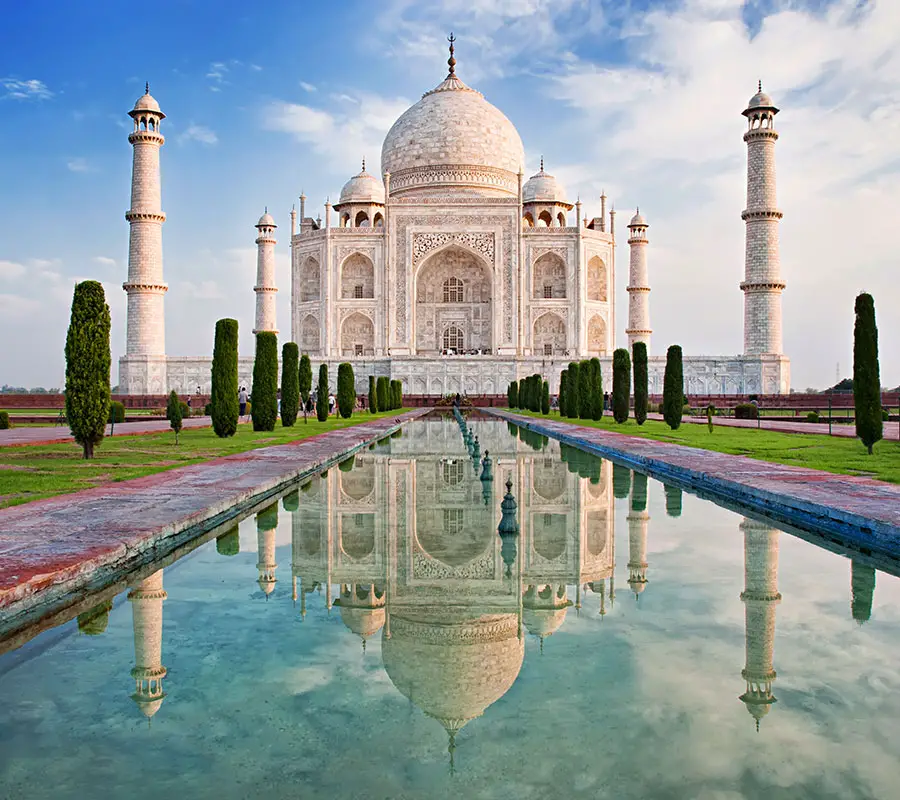
30 – Old Quebec | First French Colonial Empire, Early 17th Century
Like the Spanish, from the 16th century onwards, the French also spent a great deal of time expanding their empire overseas. In the case of the French, their colonial empire was split into two periods, the first of which existed in the 16th and 17th centuries when the vast majority of the land they conquered was in the New World.
Quebec City sits on the St Lawrence River, it was founded in the 17th century and is the site of the oldest French settlement in North America. The city comprises two parts; the Upper Town is found atop Cap Diamant where it looks out over the river, an important strategic position for the French. The Lower Town sits underneath the cape and contains more buildings from the colonial period including a Roman Catholic church, Notre-Dame-des-Victoires. Although not related to the French Colonial Empire, the most striking element of Quebec’s skyline is the Château Frontenac, a historic hotel built by the Canadian Pacific Railway Company in 1893.
Left – Quebec City Skyline | WikiCommons: Martin St-Amant & Right – Iglesia de Notre-Dame des Victoires | WikiCommons: Wilfredor
31 – U.S. Capitol Building | United States of America, 1793-1830
Not long after the French colonies fell to the British in the late 18th century, the American Revolutionary War would break out leading to the Declaration of Independence in 1776 and the founding of the United States of America. Shortly after the constitution was signed, the United States Congress was established and Thomas Jefferson launched a competition to design the new U.S. Capitol building in Washington D.C.
The United States Capitol Building would open in 1800 and was further expanded in the 1850s to include several additional wings and its iconic dome, built with 4500 tonnes of cast iron. The massive building we see today is made up of five levels containing almost 600 rooms including the House Chamber and the Senate Chamber both housed in their own wings. The Capitol Building is one of the best examples of neoclassical architecture and stands as an important symbolic monument for the American people.
Left – U.S. Capitol Building | Unsplash: Florian Pintar & Right – Closeup of the U.S. Capitol Building | Unsplash: Louis Velazquez
32 – Pena Palace | United Kingdom of Portugal, Brazil and the Algarves, 1854
By the mid 19th century, Europe was experiencing the wrath of the French Empire on home soil led by Napoléon Bonaparte. Both Portugal and Spain were invaded by the French and the Portuguese royalty fled to Brazil, a move that would lead to political instability and eventually civil war. At the same time, Europe was experiencing another burst of creativity; the period known as Romanticism led to a significant progression in areas such as writing, music and architecture. Pena Palace is one of the most interesting buildings from this period and an excellent example of Romantic architecture.
Perched on a hilltop overlooking the surrounding countryside, the site where Pena Palace sits has a long history. It was initially used as a chapel and was converted into a monastery that was destroyed in the 1755 Lisbon earthquake. King Ferdinand then purchased the property and between the years of 1842 and 1854 built a palace to be used by Portuguese royalty. Its exterior shows influence from other styles including Neo-Gothic, Neo-Islamic and Neo-Renaissance and is coloured in vibrant reds and yellows.

33 – Neuschwanstein Castle | Kingdom of Bavaria, 1869-1886
Like Portugal, at the turn of the 19th century, Germany was experiencing a juxtaposition between political upheaval and Romantic expression. At this point, Germany, as we know it today, did not exist; it was made up of a series of independent states that included Bavaria, the largest state in modern-day Germany. In 1864, Ludwig II ascended to the throne at the age of 18 and would rule Bavaria until his death in 1886. By far his greatest legacy is found at the very southern tip of Germany overlooking the Austria border.
Enamoured with the castle architecture of the German Knights, in 1869, Ludwig set out to build a sanctuary to end all sanctuaries in the mountainous region over which he ruled. He spent much time as a child in a castle called Hohenschwangau and wrote in a letter to the famous composer Richard Wagner “this castle will be in every way more beautiful and habitable than Hohenschwangau”. King Ludwig named the castle New Hohenschwangau and it wouldn’t adopt the moniker Neuschwanstein until after his death in 1886.

34 – Eiffel Tower | France, 1880’s
By the end of the Industrial Revolution, the territory of France was more or less as we see it today. The Industrial Revolution was a period of progression in manufacturing processes that occurred in the late 18th and early 19th centuries. One of the major breakthroughs of this period was a drastic improvement in the production of iron, an incredibly strong metal that had major implications for fields such as engineering, exemplified best by the Eiffel Tower in Paris.
In stark contrast to other architectural styles at the time, the Eiffel Tower was constructed between 1887 to 1889 and consists solely of a gigantic cast-iron lattice frame. It stands 324 meters tall and at the time of construction was the tallest building in the world, almost doubling the size of its predecessor, the Washington Monument. The Tower was named after its engineer, Gustave Eiffel who also built the iron frame for the Statue of Liberty in New York.
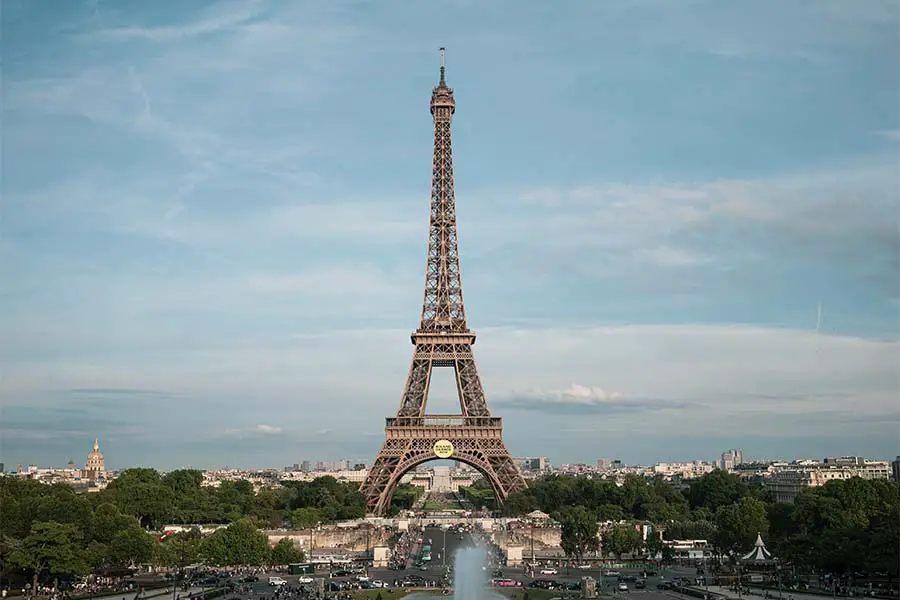
35 – Christ the Redeemer | Second Brazilian Republic, 1931
After becoming the capital of the Portuguese Colonial Empire in 1808 when the country’s royalty fled Napoléon, Brazil declared its independence from Portugal in 1822, establishing the Empire of Brazil. 67 years later, a military coup would bring an end to the Empire and usher in the age of the First Brazilian Republic in 1889. Although Brazil was still going through much political turmoil, a campaign to erect a statue of Jesus Christ in Rio de Janeiro was launched and the final design showing Jesus with outstretched arms was chosen as a symbol of peace.
Christ the Redeemer is perched on the peak of Corcovado mountain overlooking the famous beaches of Rio. It stands at a height of 30 meters / 98 feet and weighs a little over 600 tons. Unlike the Statue of Liberty, which is made from an iron frame and copper skin, Christ the Redeemer is made from reinforced concrete covered with thousands of soapstone tiles. The statue was officially opened in 1931 after 9 years of construction and was named as one of the New Seven Wonders of the World in 2007.
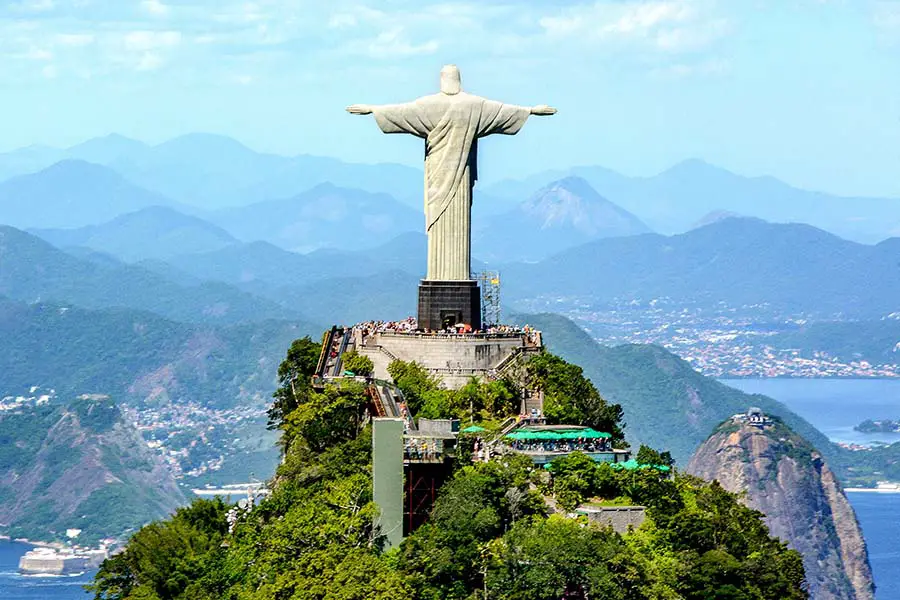
36 – Sydney Opera House | Australia, 1973
Almost exactly a century after Brazil gained independence from the Spanish, Australia gained independence from the British on January 1st, 1901. After joining the British in both the first and the second world wars, the 50s, 60s and 70s saw renewed support for the arts and an ambitious project in Sydney’s harbour began to take shape. In 1955 an international design competition was launched for a new opera house and, in 1957, the Dane, Jørn Utzon was announced as the winner.
The groundbreaking design would take over 14 years to complete and stands today as one of the most recognisable buildings in the world. The roof of the opera house is made up of a series of shells, representing sails used to traverse the waters in front of which it sits. Its interior contains 6 performance spaces including a concert hall that seats up to 2000 people. Aside from the works of art it houses, the Sydney Opera House is part of one of the most interesting and creative festivals in the world; Vivid Sydney is an annual festival in Australia’s capital, which celebrates both light and music and sees the roof of the opera house lit up with spectacular projections.
Left – Sydney Opera House overlooking Sydney Harbour | Pixabay: Patty Jansen & Right – Sydney Opera House during Vivid Sydney | Pixabay: Patty Jansen
37 – Burj Khalifa | United Arab Emirates, 2009
Along with Bahrain and Qatar, the United Arab Emirates gained sovereignty from the British in 1971. It sits on the eastern side of the Arabian Peninsula overlooking the Persian Gulf. This relatively small country is made up of 7 emirates including Dubai and Abu Dhabi and is home to one of the strongest economies in the world. Thanks to the strength of their economy, the UAE has seen a boom in construction over the decades, which led to one of the most ambitious engineering projects the world has seen.
Since 2010, the Burj Khalifa has stood as the world’s tallest building at a staggering 828 meters / 2,700 feet, beating out its predecessor, the Shanghai Tower, by almost 200m. The architecture of the building is based on other great Islamic works of art including the Great Mosque of Samarra and houses 10,000’s of homes, hotels and a mall. Exactly 6 times the height of the Great Pyramid of Giza, which stands at 138 meters, this gigantic structure stands as a testament to the boundaries of our capabilities and it remains to be seen as to when the height of this building will be surpassed.

Sources
Timeline of World History – Useful Charts, The History of the World Every Year – Ollie Bye, Architecture Timeline, UNESCO, Encyclopedia Britannica, Wikipedia, Ramp Discovery in Egypt, Giza Pyramids, Who Built Stonehenge, Terracotta Warriors, Holy Sites of Judaism, Tourism Israel, Colosseum, Visit Petra, Hagia Sofia, Early Christianity, The History of North America: Every Year – EmperorTigerstar, El Castillo Building Design, Angkor Wat, Anglo-Saxon History, The History of Western Europe – Ollie Bye, Who Built Windsor Castle, Imperial Castle of Nuremberg, Timbuktu, Mongol Invasions of Korea, Visit Seoul, Christopher Columbus Biography, History of Japan – Epimetheus, Feudalism in Medieval Japan, Sultan Ahmed Mosque Architecture, Rome Museum, Arts of the Mughal Empire, American History, U.S. Capitol Building, Brief History of Portugal, Neuschwanstein Castle, Iron and the Industrial Revolution, Sydney Opera House, Sydney Opera House Design & Vivid Sydney.








